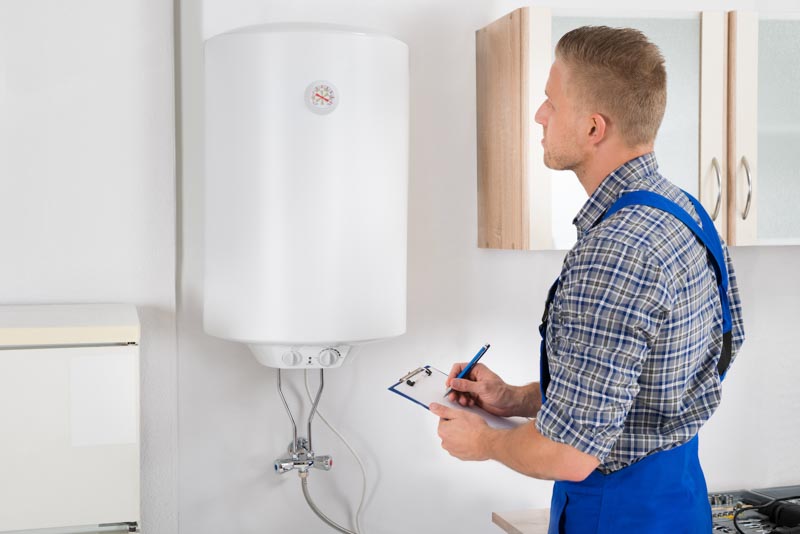You are looking to get a new boiler installed in your property, but you are not sure where to place it? Luckily for you, we’ve written a handy guide to swiftly navigate the do’s and don’ts of gas boiler installation to keep your home heated, stylish, and safe.
Safety Regulations
First and foremost, the position of your gas boiler must abide by UK building regulations. There’s no point installing your boiler somewhere because it looks nice, only to find it’s a hazard and having to take it down again.
The main regulations for the location of your boiler are as follows:
- Your boiler must be fitted inside your home (It sounds obvious but you’d be surprised)
- The flue of the boiler must reach the air outside, be it through the outside wall or up through the roof. Be careful, though, there are a few minimum legal distances that the flue terminal can be from certain building features and windows. AQUAHEAT would advise these on our site visit.
- Boilers can be fitted onto any wall strong enough to bear its weight when at maximum water capacity. However, it is advised that external walls are used as the flue must reach the outside
- The condensate pipe must have space to drain the condensed water. It is recommended that this liquid drains into the internal household drains as it may freeze in cold, outside temperatures and damage the boiler
There are also a number of regulations for the process of boiler installation. For example, the engineer you hire must be Gas Safe registered, the boiler you choose must be A-rated (or have a 92% ErP), and all gas boilers must be installed with time and temperature controls like a smart thermostat.
Other things to consider
Alongside the legal and recommended requirements, you may want to consider the following factors to help you further down the line:
Servicing
When positioning your gas boiler, make sure you leave enough space surrounding it for ease of access. If a problem arises, you’ll need to be able to access it quickly and without obstruction, especially when it is time to service your boiler. AQUAHEAT are always on hand to help in this instance.
Space
Although not the most important factor, the aesthetics and layout of your home do play a role in deciding where to locate your gas boiler.
If your home has a notable lack of storage, consider locating the boiler in a more peripheral location (like the utility room or airing cupboard) to conserve space in the main kitchen and bathroom areas. You might also consider your home’s design, building the boiler into a cabinet or pre-existing structure.
Temperature
If your gas boiler is located in a peripheral space like an annexe or garage, you may want to consider adding extra frost protection. These areas get colder than the inside of your home which leaves the system pipework at risk, threatening the boiler’s performance.
Typical boiler placement
Most commonly, boilers are positioned in close proximity to the kitchen or the bathroom because these areas demand the most water. But there are other options available too:
Kitchen/Bathroom
Having your boiler in the bathroom or kitchen is undoubtedly the most convenient location. Not only will the water from your sink or shower, and bath be heated quickly, but the condensate pipe can be plumbed in alongside your bathroom waste.
Many people have their airing cupboard and linen storage near their bathroom, which is always a viable option.
Another benefit of installing your gas boiler in your kitchen or utility room is the muffling of any noise the boiler may make. Other appliances like fridges and washing machines usually make continuous sounds, so the boiler will blend in well. That being said, most boilers are fairly quiet nowadays.
Bedrooms
For homeowners whose bathrooms and kitchens are on the smaller side, bedrooms are another viable option.
Often installed in built-in wardrobes or cupboards, boilers in the bedroom are hidden away and do not take up valuable cupboard space in the busiest rooms in the house. If you’re opting for a bedroom boiler, make sure to consider the safety requirements above too.
Loft Space
If you’re really limited on inside space, think upwards. Homeowners often banish their boilers to the loft to save wall space downstairs.
While this is convenient for many, it comes with a caveat. Lofts aren’t always accessible, so if you’re planning to install your boiler up there, you’ll need to make provisions for it to be easily serviced.
Another downside to locating your boiler in the loft is the distance from the rest of the house’s water supply. Having the boiler up in the rafters may slow down the rate at which your water is heated.
Loft installations also require a fixed loft ladder, loft light with switch and boarding to the boiler and 1m squared in front of it.
Garage
Similarly to the loft location, the garage is often a longer run from the bathroom and kitchen, this does not affect regular boilers only combinations.
Conclusions
So what have we learnt? Well, you can place your gas boiler pretty much anywhere (within reason). But there are definitely places in your home that work better than others. The bathroom, kitchen, or utility room are probably your best bet, while more peripheral spaces like the garage and loft are less efficient.
As always, refer to the UK safety guidelines and contact AQUAHEAT today with any questions you might have about gas boiler installation. Alternatively, head over to our website for more information.

